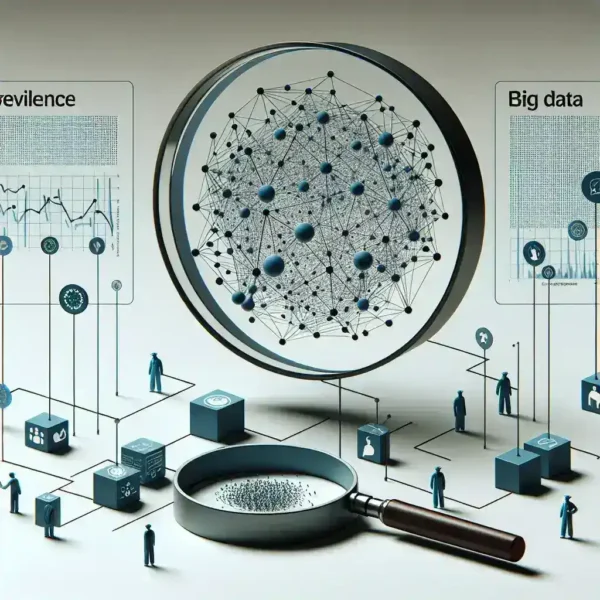The digital landscape has transformed dramatically over the past decade, with video content becoming the dominant form of online media consumption. YouTube, as the world’s largest video platform, hosts billions of hours of content that users worldwide want to access offline. This growing demand has led to the development of sophisticated downloading technologies that enable users to save their favorite videos for later viewing.

Ultimate Guide to YouTube Video Downloaders: Everything You Need to Know in 2024
Understanding YouTube Video Downloading Technology
The digital landscape has transformed dramatically over the past decade, with video content becoming the dominant form of online media consumption. YouTube, as the world’s largest video platform, hosts billions of hours of content that users worldwide want to access offline. This growing demand has led to the development of sophisticated downloading technologies that enable users to save their favorite videos for later viewing.
YouTube video downloading represents a fascinating intersection of technology and user convenience. At its core, the process involves extracting video files from YouTube’s streaming infrastructure and converting them into downloadable formats. This technology has evolved from simple browser extensions to comprehensive platforms that offer multiple format options, quality settings, and additional features.
The YT video downloader market has experienced tremendous growth as users seek reliable solutions for offline content access. Modern downloading platforms utilize advanced algorithms to parse YouTube’s complex video delivery systems, ensuring compatibility with various video qualities and formats while maintaining download speeds that meet user expectations.
The Evolution of Video Downloading Platforms
Video downloading technology has undergone remarkable transformations since the early days of the internet. Initially, downloading videos required technical expertise and specialized software. Today’s platforms have democratized this process, making it accessible to users regardless of their technical background.
Historical Development Timeline
The journey began in the mid-2000s when YouTube first launched, and creative developers recognized the need for offline access solutions. Early downloaders were often command-line tools that required users to understand complex syntax and file management systems. These primitive solutions laid the groundwork for the sophisticated platforms we see today.
As internet speeds improved and video quality standards evolved, downloading platforms adapted accordingly. The introduction of HD video formats, 4K resolution, and various codec technologies challenged developers to create more versatile solutions. Modern platforms now support an extensive range of formats, from basic MP4 files to high-quality video formats that preserve the original content’s visual integrity.
Technological Advancements
Contemporary downloading platforms incorporate several cutting-edge technologies that enhance user experience and functionality. Machine learning algorithms help optimize download speeds by analyzing network conditions and adjusting data transfer protocols accordingly. Additionally, advanced parsing systems can handle YouTube’s frequent updates to their video delivery infrastructure, ensuring consistent functionality despite platform changes.
Cloud-based processing has revolutionized the downloading experience by shifting computational demands from user devices to powerful server infrastructure. This approach enables faster processing times, reduces device resource consumption, and provides access to features that would otherwise require significant local computing power.
Comprehensive Feature Analysis
Modern YouTube video downloaders offer an impressive array of features designed to meet diverse user needs and preferences. Understanding these capabilities helps users make informed decisions when selecting the most appropriate platform for their requirements.
Quality and Format Options
Today’s downloaders support an extensive range of video qualities, from standard definition 480p to ultra-high-definition 8K formats. Users can select their preferred quality based on factors such as available storage space, intended viewing device, and personal preferences. The ability to choose specific formats ensures compatibility with various devices and media players.
- Video Formats: MP4, AVI, MOV, WMV, FLV, and WebM
- Audio Formats: MP3, AAC, OGG, WAV, and FLAC
- Quality Options: 144p to 8K resolution support
- Bitrate Selection: Customizable audio and video bitrates
Advanced Processing Capabilities
Professional-grade downloading platforms incorporate sophisticated processing features that extend beyond basic video extraction. These capabilities include real-time format conversion, batch downloading for multiple videos, and playlist processing that can handle entire channels or curated collections.
Subtitle extraction and embedding represent another significant advancement in downloading technology. Users can download videos with embedded subtitles or extract subtitle files separately in various formats including SRT, VTT, and ASS. This functionality proves particularly valuable for educational content, foreign language videos, and accessibility purposes.
Legal Framework and Compliance Considerations
The legal landscape surrounding video downloading remains complex and varies significantly across different jurisdictions. Understanding these legal considerations is crucial for users who want to engage with downloading technology responsibly and within the bounds of applicable laws.
Copyright and Fair Use Principles
Copyright law forms the foundation of legal considerations related to video downloading. Content creators retain exclusive rights to their work, including the right to control distribution and reproduction. However, certain exceptions exist under fair use provisions that may permit downloading for specific purposes such as education, research, or personal use.
The concept of fair use varies between countries, with some jurisdictions providing broader exceptions than others. In many regions, downloading copyrighted content for personal, non-commercial use may fall within acceptable boundaries, while redistribution or commercial use typically violates copyright protections.
Platform Terms of Service
YouTube’s Terms of Service explicitly prohibit downloading content unless specifically permitted by the platform or content creator. Users must carefully consider these restrictions when using downloading tools, as violation of terms of service can result in account suspension or other penalties.
However, the enforceability of these terms varies, and many users continue to download content for legitimate personal use. The legal community continues to debate the balance between platform control and user rights, particularly regarding content that users have legally accessed through paid subscriptions or ad-supported viewing.
Technical Architecture and Performance Optimization
Understanding the technical foundation of YouTube video downloaders provides valuable insight into their capabilities and limitations. Modern platforms employ sophisticated architectures designed to maximize performance while maintaining reliability and user-friendly interfaces.
Server Infrastructure and Scalability
Professional downloading platforms utilize distributed server networks to handle varying loads and provide consistent performance across different geographic regions. These infrastructures incorporate content delivery networks (CDNs) that cache frequently requested content closer to users, reducing download times and improving overall efficiency.
Load balancing systems ensure that user requests are distributed across available servers, preventing bottlenecks during peak usage periods. Advanced platforms implement auto-scaling capabilities that automatically adjust server capacity based on real-time demand, maintaining optimal performance regardless of user volume fluctuations.
Data Processing and Optimization
The video downloading process involves several complex steps that modern platforms have optimized for speed and reliability. Initial video analysis identifies available formats and quality options, while intelligent selection algorithms recommend optimal settings based on user preferences and device capabilities.
Compression algorithms play a crucial role in reducing download times without significantly compromising quality. Advanced platforms employ adaptive compression that adjusts based on content type, ensuring that text-heavy videos receive different treatment than action-packed content with rapid scene changes.
User Experience and Interface Design
The evolution of user interface design in downloading platforms reflects broader trends in web development and user experience optimization. Modern platforms prioritize simplicity and accessibility while maintaining access to advanced features for power users.
Intuitive Design Principles
Contemporary downloading platforms embrace minimalist design philosophies that reduce cognitive load and streamline the downloading process. Clean interfaces with clear visual hierarchies guide users through the necessary steps without overwhelming them with unnecessary options or complex navigation structures.
Progressive disclosure techniques reveal advanced features only when needed, allowing novice users to accomplish basic tasks while providing experienced users access to comprehensive customization options. This approach ensures that platforms remain accessible to users with varying levels of technical expertise.
Mobile Optimization and Cross-Platform Compatibility
The increasing prevalence of mobile device usage has driven significant improvements in mobile-optimized downloading interfaces. Responsive design ensures that platforms function effectively across different screen sizes and input methods, while touch-optimized controls provide intuitive interaction on smartphones and tablets.
Cross-platform compatibility extends beyond device types to include operating system support. Modern platforms function seamlessly across Windows, macOS, Linux, iOS, and Android environments, ensuring that users can access downloading capabilities regardless of their preferred technology ecosystem.
Security and Privacy Considerations
Security represents a paramount concern in the video downloading landscape, as users must trust platforms with their personal information and device security. Reputable platforms implement comprehensive security measures to protect user data and prevent malicious activities.
Data Protection and Privacy Policies
Leading downloading platforms maintain strict privacy policies that govern data collection, storage, and usage practices. These policies typically specify what information is collected, how it is used, and under what circumstances it might be shared with third parties.
Encryption protocols protect data transmission between user devices and platform servers, ensuring that sensitive information remains secure during the downloading process. Advanced platforms implement end-to-end encryption that prevents unauthorized access to user data even if communication channels are compromised.
Malware Prevention and System Security
The downloading ecosystem unfortunately includes malicious actors who distribute malware disguised as legitimate downloading tools. Reputable platforms invest heavily in security measures that protect users from these threats while maintaining smooth functionality.
Regular security audits and vulnerability assessments help identify potential weaknesses before they can be exploited. Automated scanning systems monitor for suspicious activities and implement real-time threat detection that can prevent malicious downloads or unauthorized access attempts.
Performance Metrics and Quality Assessment
Evaluating downloading platform performance requires consideration of multiple metrics that impact user experience and satisfaction. Understanding these performance indicators helps users select platforms that meet their specific requirements and expectations.
Download Speed and Reliability
Download speed represents one of the most critical performance metrics for video downloading platforms. Factors affecting speed include server capacity, network infrastructure, file size, and concurrent user load. Professional platforms optimize these variables to provide consistently fast download speeds.
Reliability metrics encompass success rates, error frequency, and platform uptime. High-quality platforms maintain success rates above 95% while minimizing errors and service interruptions. Redundant systems and backup infrastructure ensure continued operation even during hardware failures or maintenance periods.
Quality Preservation and Format Accuracy
Maintaining video quality during the downloading process requires sophisticated processing algorithms that preserve original content characteristics while adapting to different format requirements. Quality assessment involves comparing downloaded files to source material across various parameters including resolution, bitrate, color accuracy, and audio fidelity.
Format accuracy ensures that downloaded files match user specifications and maintain compatibility with intended playback devices. Advanced platforms perform post-processing verification to confirm that downloaded content meets quality standards and format requirements.
Industry Trends and Future Developments
The video downloading industry continues to evolve in response to changing user needs, technological advancements, and regulatory developments. Understanding current trends provides insight into the future direction of downloading technology and platform capabilities.
Emerging Technologies and Integration
Artificial intelligence and machine learning technologies are increasingly integrated into downloading platforms to enhance user experience and optimize performance. AI-powered recommendation systems suggest optimal download settings based on user behavior patterns and device capabilities.
Blockchain technology shows promise for addressing copyright and content attribution challenges in the downloading space. Distributed ledger systems could provide transparent tracking of content usage while ensuring appropriate compensation for creators and rights holders.
Regulatory Evolution and Compliance
Regulatory frameworks continue to evolve as governments worldwide grapple with balancing content creator rights, platform responsibilities, and user freedoms. Future developments may include standardized licensing systems that enable legitimate downloading while ensuring appropriate revenue distribution to content creators.
International cooperation on copyright enforcement and digital rights management may lead to more consistent global standards for video downloading activities. These developments could simplify compliance requirements while providing clearer guidelines for users and platform operators.
Best Practices and Recommendations
Successful utilization of video downloading technology requires adherence to best practices that ensure legal compliance, optimal performance, and security protection. These recommendations reflect industry expertise and user experience insights.
Platform Selection Criteria
Choosing an appropriate downloading platform requires careful evaluation of multiple factors including feature availability, security measures, performance metrics, and legal compliance. Users should prioritize platforms with established reputations, transparent privacy policies, and comprehensive security protections.
According to recent industry analysis by TechRadar, the most reliable platforms demonstrate consistent performance across different network conditions while maintaining high success rates for various content types. Regular platform updates and responsive customer support indicate ongoing commitment to user satisfaction and security.
Usage Guidelines and Legal Compliance
Responsible downloading practices involve understanding and respecting copyright laws, platform terms of service, and content creator rights. Users should limit downloading to content they have legitimate rights to access and avoid redistribution of copyrighted material without proper authorization.
Educational institutions and researchers may have broader fair use protections that permit downloading for academic purposes. However, these exceptions typically require proper attribution and limitation to educational contexts. Commercial use of downloaded content generally requires explicit permission from rights holders.
Technical Support and Troubleshooting
Effective technical support systems distinguish professional downloading platforms from amateur alternatives. Comprehensive support infrastructure helps users resolve issues quickly while maintaining positive user experiences.
Common Issues and Solutions
Download failures represent the most frequent technical issues encountered by users. These problems typically result from network connectivity issues, server overload, or changes to YouTube’s video delivery systems. Professional platforms implement automatic retry mechanisms and alternative processing methods to minimize failure rates.
Format compatibility issues may arise when downloaded files cannot be played on intended devices. Modern platforms address these concerns through extensive format testing and compatibility verification across popular media players and mobile devices.
Customer Support Infrastructure
Responsive customer support systems provide multiple communication channels including email, live chat, and comprehensive documentation resources. The CNET technology review team emphasizes the importance of accessible support systems that can address both technical issues and general usage questions.
Self-service resources including FAQ sections, video tutorials, and troubleshooting guides enable users to resolve common issues independently. These resources reduce support ticket volume while providing immediate assistance for frequently encountered problems.
Economic Impact and Market Analysis
The video downloading market represents a significant segment of the broader digital media ecosystem, with economic implications extending beyond direct platform revenue to include impacts on content creation, advertising models, and user behavior patterns.
Market Size and Growth Projections
Industry analysis indicates steady growth in the video downloading market, driven by increasing mobile device usage, limited internet connectivity in certain regions, and growing demand for offline content access. Market research suggests that the global video downloading software market will continue expanding as users seek greater control over their media consumption experiences.
Revenue models for downloading platforms vary significantly, ranging from subscription-based services to ad-supported free platforms. Premium features such as batch downloading, high-quality format options, and priority processing often justify subscription fees while maintaining free access to basic functionality.
Content Creator Considerations
The relationship between video downloading and content creator revenue streams remains complex and evolving. While downloading may reduce ad revenue from repeated views, it can also increase content accessibility and audience reach in regions with limited internet connectivity.
Some content creators embrace downloading as a means of expanding their audience reach, while others view it as a threat to their revenue models. Future developments may include creator-controlled downloading permissions and revenue-sharing arrangements that benefit both creators and users.
Environmental and Sustainability Factors
The environmental impact of video downloading technology reflects broader concerns about digital infrastructure sustainability and energy consumption. Understanding these factors helps users make informed decisions about their digital consumption patterns.
Energy Consumption and Carbon Footprint
Video downloading and storage require significant energy resources for server operation, data transmission, and local storage. However, offline viewing can reduce overall energy consumption by eliminating the need for repeated streaming of the same content.
Efficient downloading platforms optimize their server infrastructure to minimize energy consumption while maintaining performance standards. Green hosting providers and renewable energy initiatives help reduce the environmental impact of downloading services.
Storage Optimization and Resource Management
Effective storage management practices help users minimize the environmental impact of their downloading activities. Selective downloading, regular file cleanup, and quality optimization based on intended use can significantly reduce storage requirements and associated energy consumption.
Cloud storage integration allows users to access downloaded content across multiple devices without maintaining local copies on each device. This approach can reduce overall storage requirements while providing convenient access to downloaded content.



Leave a Comment